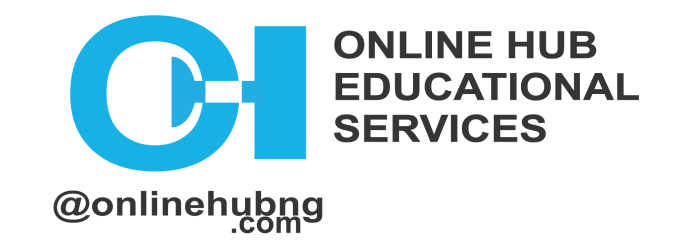Like every other industry, technology is quickly changing how we build community. Technology is simply an extension of the way humans exist in the world today, and in its very definition, Technology is the application of information for utility and for creating communities. Social media is a way to connect on a personal level with your members and target communities. The various tools available in using social media have effectively changed the way we communicate with one another. Moving into a Digital Age, where information spreads through new forms of online media with greater reach and speed than traditional media, there is no doubt that social media platforms like Facebook and Twitter will continue to play an ever increasing role in informing and connecting people worldwide.
Here are four key reasons why using social media is critical for any organization in today’s digital age:
ADD VALUE
Social media is a two-way conversation that starts with listening and helping. The use of social media is all about delivering value when, where, and how your audience wants it. And knowing exactly what type of value to deliver would require that you ask questions of your target audience:
- What matters to them?
- What challenges are they struggling with?
- Where do they currently go for assistance? What (online) groups are they forming?
- How does your target audience celebrate victories on their social causes?
The value you may bring to any digital space could simply be in connecting like-minded people. And in connecting people, you are helping them answer critical questions that pertain to their work
LEARN
Learning from your community allows you the opportunity to also discover who your most engaged members are. Once you’ve identified your most engaged members, you can reach out to them with specific questions or even for assistance in coming up with a solution to a challenge. Since they are already engaged, they won’t mind providing assistance to you as this also helps them stand out as a thought-leader in your community. To learn more about what others are saying about your brand or an issue that matters to you, you can set up a Google Alert that tracks the web for mentions of your brand or issue and have it sent directly to your inbox.
RELATIONSHIPS
The “social” part of social media is there for a reason – because of the relationships that you will no doubt build as you use the various platforms. You can use social media to build relationships with influences and potential new members. These relationships are the bedrock of what makes us human, and technology simply facilities all of this.
RETURN ON INVESTMENT (ROI)
If you are going to spend any considerable amount of time online for your organization, you need to make sure that it is contributing to your organization’s mission and vision. The only way to know how much social media is enough is to have some sort of gauge on your return on investment.
So how do you measure ROI?
- Here’s the ROI formula that you need to know:
Social media ROI = (SM return – SM investment) / SM investment percent. It’s important to measure the financial impact (the cost) as well as the social impact (change in human behavior).
- Set clear goals
- Create a list of metrics you want to track against. For example, number of men and women who engage with your brand, number of page visits, unique visitors, number of tweets and re-tweets, number of likes on your Facebook page, etc. These metrics will help you in understanding your social media reach.
- Pick an analytical tool that does the majority of your heavy lifting for you in terms on tracking the metrics that are important to you. Luckily, Facebook and Twitter come with their own analytical tools already built into the platform. For your website, you can use Google Analytics.
- Be ready to make adjustments along the way when it comes to your ROI.
The Importance of Listening is essential to communication. You know you are using social media right when you are listening most of the time instead of talking. Just like in real life, most people on social media are not really listening but simply “waiting to respond”. Listening in the social media context is commonly referred to as social media monitoring. By monitoring what is happening on social media, you can better understand your audience, become aware of content that people care about, and identify online influences who can reach and inform larger audiences. Listening or monitoring also helps you avoid some common mistakes – speaking in too much professional jargon, talking to the wrong audience, or assuming that people already care/know about your issue, for instance.
What does an effective social media strategy look like?
To get the most of your social media efforts, your strategy should include the following:
- Determine which social media sites are most beneficial to post to and when to post to them
- Decide on how large you want your social media presence to be
- Identify the right metrics to use to measure your progress towards your social media goals
- Resolve the how and why to engage current and potential audiences online
Make sure the account names you come up with on Facebook or Twitter can be easily identifiable to your target audience.
STEP 1: Clarify your social media goals
STEP 2: Audit your current social media status
STEP 3: Develop your content strategy
Create an editorial calendar that will help you keep track of all the content you want to post. Your editorial calendar lists the dates you intend to post blogs, tweets, Facebook posts and other content you plan to use during your social media campaigns. Social media has grown massively, but its growth is now starting to plateau. There are over 50 social media platforms you can choose to engage your community on and we don’t advice you try to be on all of them at once.
Understanding the right tools to use: Deciding on which social media platform to use will depend on the demographic you plan to target. Pick social networks that align mostly with where your audiences are hanging out. You need an audience to make your social media marketing work, therefore choose platforms that appeals to them. Key factors in selecting the right social media tool for your organization:
- Price and billing option
- Plan options and limitations
- Content publishing and scheduling
- Social interaction capabilities
- Analytics
How to create S.M.A.R.T. objectives
It stands for five qualities your goals should have. They should be specific, measurable, achievable, relevant, and time-bound. The SMART method is one of the most popular and effective tools for creating realistic and achievable goals.
- Specific: This identifies what will change in concrete terms, by identifying the particular population (audience) and/or setting (tools), and the specific actions that come as a result.
- Measurable: Objectives should be quantifiable and easy to measure as a means for evaluation. It should include the specific metrics you will be collecting.
- Achievable: Objectives should be feasibly achieved within a proposed time frame with the resources and support available. Don’t make them unrealistic.
- Relevant: Your objective, strategy, and overall organizational vision and mission should align. Ask: does this objective have an effect on the desired goal?
- Time-bound: Good objectives have deadlines. Ask: When will this be accomplished? A specific and reasonable time frame should be included within an objective statement.
The Do’s and Don’ts of Social Media
Social Media DO’s
- Be Professional, ALWAYS.
- Be Social and Conversational.
- Complete Your Profile.
- Post Frequently.
- Know your customers.
- Be active but don’t over-do it.
- Time does matter.
- Share.
- Be original.
- Customer Service.
- Having a personality.
Social Media DON’Ts
- Don’t use automation all the time.
- Don’t over market or Spam.
- Don’t Overuse Hashtags.
- Liking your own posts.
- Neglect.
- Don’t connect with everyone.
- Don’t Forget to Network.
- Privacy Settings(protecting your passwords).
- Not responding at all.
How to build an audience and following?
- If you are just starting out on social media, build on your audiences’ comments/feedback to tailor your content.
- Be responsive.
- Use photos and videos in your posts.
- Start with who you know.
- Follow back and share.
- Develop a voice that shows your personality.
- Don’t just talk about the issues and causes that matter to your organization
Don’t do the typical social media FAIL by simply asking someone or an organization to follow you if that is the first interaction you have with them. Requests of “KFB” (kindly follow back) are usually ignored 8 out of 10 times!
How to manage social media accounts
- Update and post to your accounts on a regular basis.
- Use a content management tool.
- Create lists of user accounts on Twitter.
Creative, engaging content and consistency are key ingredients for an effective social media strategy. Engaging content is what gets your audience members hooked and establishes your organization as a reliable source for information by aiming for daily posts and activity, diversify the types of content you post and Dedicate a specific time each day of the week for listening.
Getting Started with Twitter’s Analytics Dashboard
Twitter Analytics is a powerful dashboard of metrics and data built within Twitter. We recommend you utilize Twitter’s Insights tool to better understand patterns and information of your followers, tweets, Ads, and much more. Digging into your metrics can unlock new pools of data you never know even existed. Once you have logged into the desired Twitter account take a look at the upper-right-hand corner of the page. Click on your profile picture. This should reveal a drop down menu, and within this menu you will have the option for “Analytics”. Once clicked, you should see a new page – your Twitter Analytics.
The “home” section should be the first thing that is seen when Twitter Analytics is opened. This section will immediately provide a 28-day performance summary of the account, as well as a comparison to the previous month.
The “tweets” section is one that can play a major role in strategizing a social media campaign. When opening this tab, you are introduced to a graph that shows users their tweet impressions broken down on a day-to-day basis. This provides a great overview to view what days were successful, making the section below much easier to comb through.
The “followers/audience” section of the analytics dashboard breaks down statistics of an account’s followers; giving insight into what the audience is interested in. When first opened, the Followers Tab will greet users with a graph that visually represents the increases & decreases in an account’s followers.
The “Twitter Cards” section allows users to create and track the success of their Twitter Cards. Twitter Cards allows Twitter users who own websites to share their website’s content in an interesting manner. Twitter Cards have various format options, enabling users to craft visually pleasing tweets for sharing articles, images and videos. When a website’s content is shared, Twitter will craft the tweet with the designated Twitter Card.
How to conduct a Twitter Chat or a Q&A
One of the easiest ways to increase your engagement and drive up your followers count is to conduct or participate in a Twitter chat or Q&A. A Twitter chat is where a group of Twitter users meet at a predetermined time to discuss a certain topic, using a designated hashtag (#) for each tweet contributed. A host or moderator will pose questions (designated with Q1, Q2…) to prompt responses from participants (using A1, A2…) and encourage interaction among the group. Chats typically last an hour. Twitter chats provide a chance to network and grow your circle (and knowledge) through shared interests.
Before your Twitter Chat:
- Do proper research on the topic
- Get a proper hashtag
- Find the appropriate time and day to hold your Twitter chat
- Promote your Twitter chat
- Participate in a Twitter chat as a participant first to get the hang of it
- Find a tool that works for organizing your Twitter chat
- Prep your moderator and Twitter guest speakers
- Draft 5 – 7 questions as the moderator of the Twitter chat and share with your Twitter guest speakers
- Use a chat tool to communicate with your Twitter guest speakers during the chat
During the Twitter chat:
- Welcome your audience
- Review the protocol/housekeeping rules of the Twitter chat with your audience
- Allocate time
- Summarize points during the chat
- Use moderators
- Retweet, Retweet, And Retweet
After the Twitter chat:
- Thank participants, your moderator and guest speakers
- Summarize the discussion using
Understanding Facebook Analytics
Facebook Page Insights is an essential tool for monitoring and evaluating your Facebook efforts, it gives a basic rundown of how your page, its posts, and even those of your competitors, are performing. The best part of Facebook Insights is that it is free and as soon as you create a Group/Page, it begins to collect data on your behalf behind the scenes. Use Facebook Insights to maximize your sharing strategy. Insights includes the ability to boost posts, which allows you to promote posts that have performed well organically, to reach even more people and increase engagement.
Understanding how to use Google Analytics
Google Analytics is important if you have a website or blog to measure the statistics. Google analytics helps to measure how many hits you have to your website – it tells you how many actual visitors you have, where they’re from, how long they stay on the website, and much more. Google Analytics is now the most widely used web analytics service on the Internet. It is offered in two additional versions: the subscription based Google Analytics 360, previously Google Analytics Premium, targeted at enterprise users and Google Analytics for Mobile Apps, an SDK that allows gathering usage data from iOS and Android Apps.
Don’t let anyone (your web designer, web developer, web host, SEO person, etc.) create your website’s Google Analytics account under their own Google account so they can “manage” it for you. If you and this person part ways, they will take your Google Analytics data with them, and you will have to start all over.
Once you have a Google account, you can simply go directly to Google Analytics to access or set up the analytics function. You will need to provide information about your organization, especially if this is the first time you are setting up a Google Analytics account. Note that you can’t move a property (website) from one Google Analytics account to another—you would have to set up a new property under the new account and lose the historical data you collected from the original property. Once you’ve provided all the necessary account details, you will be provided with a unique Tracking ID. Clicking on the Get Tracking ID button will generate a popup of the Google Analytics terms and conditions, which you have to agree to. Then you will get your Google Analytics code. This tracking code must be installed on every page on your website, not just the Home/Landing page, because you want to track your visitors’ movement across all pages of your website. The installation will depend on what type of website you have, so be mindful of this and following the prompted instructions carefully. Once you start getting in Google Analytics data, you can start learning about your website traffic. Each time you log in to Google Analytics, you will be taken to your Audience Overview report.
Nothing is constant with social media, and this is the beauty and frustrating thing about it! Social media platforms are always evolving and coming up with new and better features to make the simple act of engaging with members easier. What’s clear is that you simply cannot afford to ignore social media if you want your organization’s mission and goal to reach scale and have the true impact that it deserves – the goal is to figure out ways to harness this potential, and drive it to create the change that we are seeking in your work.




